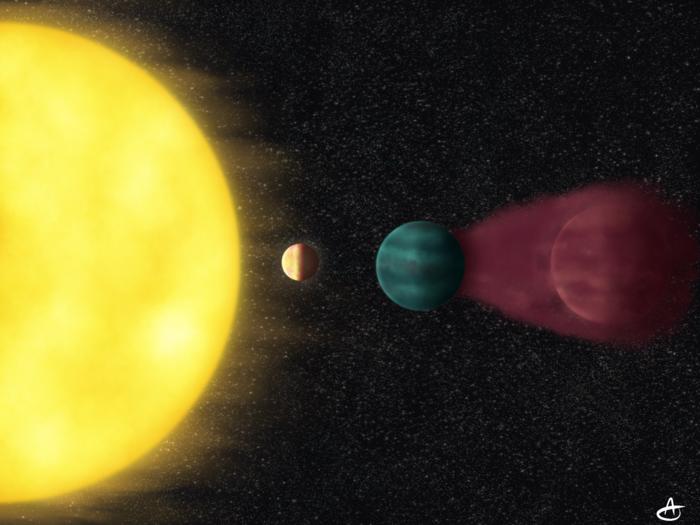In the whispers of dust
a fledgling orb
entwines
a youthful star –
the genesis of worlds
bound within
each
uncanny spin.
Playing out
the permutations
of how
we might
be born
and live
and die.
In its light
our past
reflected,
our future
foretold.
Two distant
mirrored pieces,
adrift
across the
patchwork quilt
of time.

This poem is inspired by recent research, which has discovered an Earth-sized planet in ‘our solar backyard’.
Understanding the origins and development of planets is a key aspect of astronomy. To do this, scientists often study young planets, which are like living fossils of planetary evolution. These young planets can provide valuable insights into how planets form and change over time, helping us understand not just their history, but potentially our own planet’s past as well.
In this context, researchers have made an exciting discovery: HD 63433 d, a planet similar in size to Earth, orbiting a young star that resembles our Sun. This star, known as TOI-1726 or HD 63433, is relatively close to us in cosmic terms, just 22 parsecs away (a parsec is a unit of distance used in astronomy, equal to about 3.26 light-years). What’s particularly interesting about HD 63433 d is that it’s the third planet found in its solar system and is one of the youngest Earth-sized planets we know of, with an estimated age of around 414 million years. This was determined by studying the star’s movement, rotation, and composition, using the latest data from the Gaia space mission and the Transiting Exoplanet Survey Satellite (TESS). TESS’s observations also revealed that HD 63433 d orbits its star every 4.2 days and has a radius 1.1 times that of Earth. The star’s brightness makes this system ideal for further study, such as examining the atmosphere of this young, Earth-like planet to understand how atmospheres can evolve and potentially be lost over time.